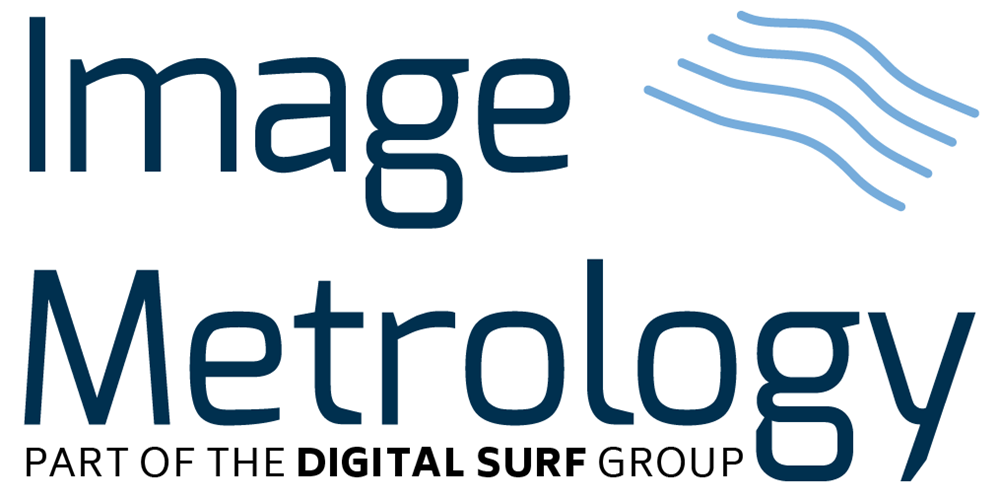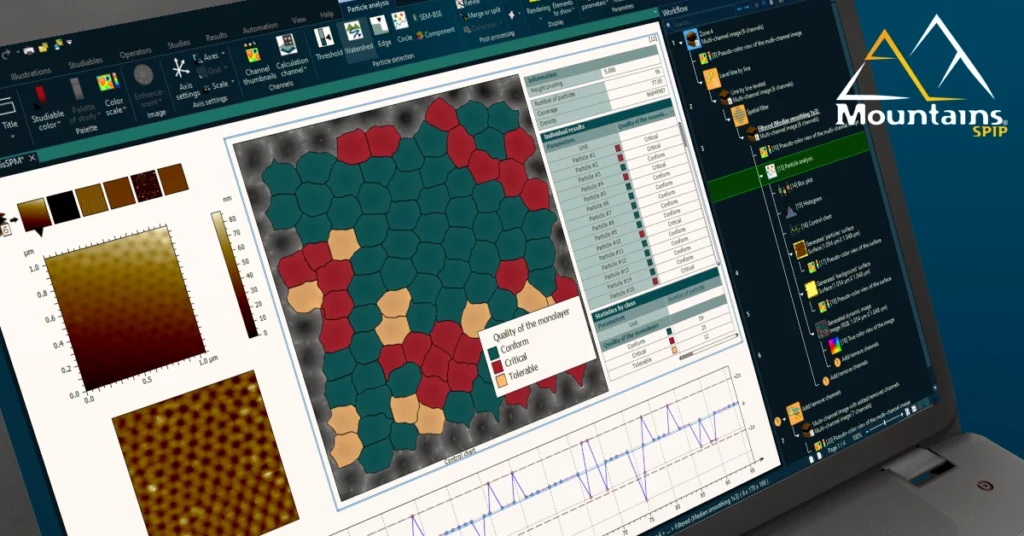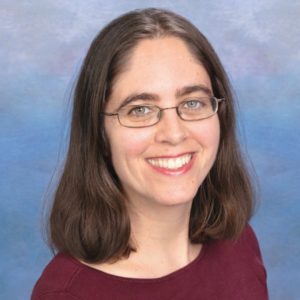Introducing MountainsSPIP® 8 – the evolution of SPIP™

Together with our colleagues at Digital Surf, we have developed and released MountainsSPIP® 8 — the next generation of SPM image analysis software.
Built on the industry-standard Mountains® platform, MountainsSPIP® 8 combines all the best SPIP™ interactivity and analytical tools with new, advanced data visualization and processing capabilities.
The software was launched in 2019 and has since generated strong interest from the scientific and industrial microscopy community.
Significant MountainsSPIP® benefits
Existing SPIP™ users will benefit from the following new features not found in SPIP:
- Scientific software with a document-based layout: organize the different steps of your image processing on one or several pages and publish them directly in different formats (PDF, Word etc.).
- Total traceability: see all the analysis steps already applied to your data and instantly revert back to any step in the process. If you edit any step, all dependent steps are automatically updated.
- Session saving: save your work and pick up where you left off last time.
- Automation tools: automate repetitive work and speed up your analysis process with powerful batch processing
- Correlative Analysis: go beyond the limitations of one single instrument technology and combine data from 3D optical profilers, AFM, SEM, fluorescence, Raman, IR or other microscopes.
- Multi-channel file management & processing: switch easily from one channel to another during each and every stage of image analysis.
Unique SPIP™ legacy features retained in MountainsSPIP®
All users can continue to take advantage of the unique features that made SPIP™ famous:
- Force spectroscopy: visualize, process and study force curves and force volume images.
- Particle analysis: easily detect and quantify features of any shape and size on virtually any surface.
- Lateral calibration: get the most accurate measurement of repeated structures and assess your instrument for linearity distortions.
- Correlation averaging: suppressing random noise and enhance repeated structures for clearer results.
- Compatibility with all scanning probe microscopes: SPM, AFM, STM, SNOM, etc. and also with ANY other microscope or surface measuring instrument (scanning electron microscope, confocal microscope, 3D optical profiler...)
- etc.
Product levels to suit your needs: MountainsSPIP® comes in three packages, Starter, Expert and Premium.
Learn more about MountainsSPIP® key features here
Please contact sales@digitalsurf.com to request your MountainsSPIP® license.
The story behind MountainsSPIP®
CEO Christophe Mignot, Digital Surf, explains in an interview the history behind MountainsSPIP®.

Christophe Mignot, CEO of Digital Surf
Transition to MountainsSPIP®: an SPIP™ user’s perspective
With the end of SPIP™ maintenance and support, Dr Dalia Yablon, founder of SurfaceChar LLC and longtime SPIP™ user, shares her experience on transitioning to MountainsSPIP® for AFM image processing and analysis.




